Your cart is empty
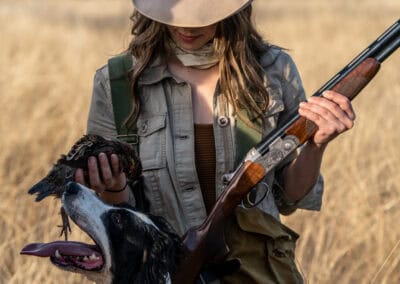
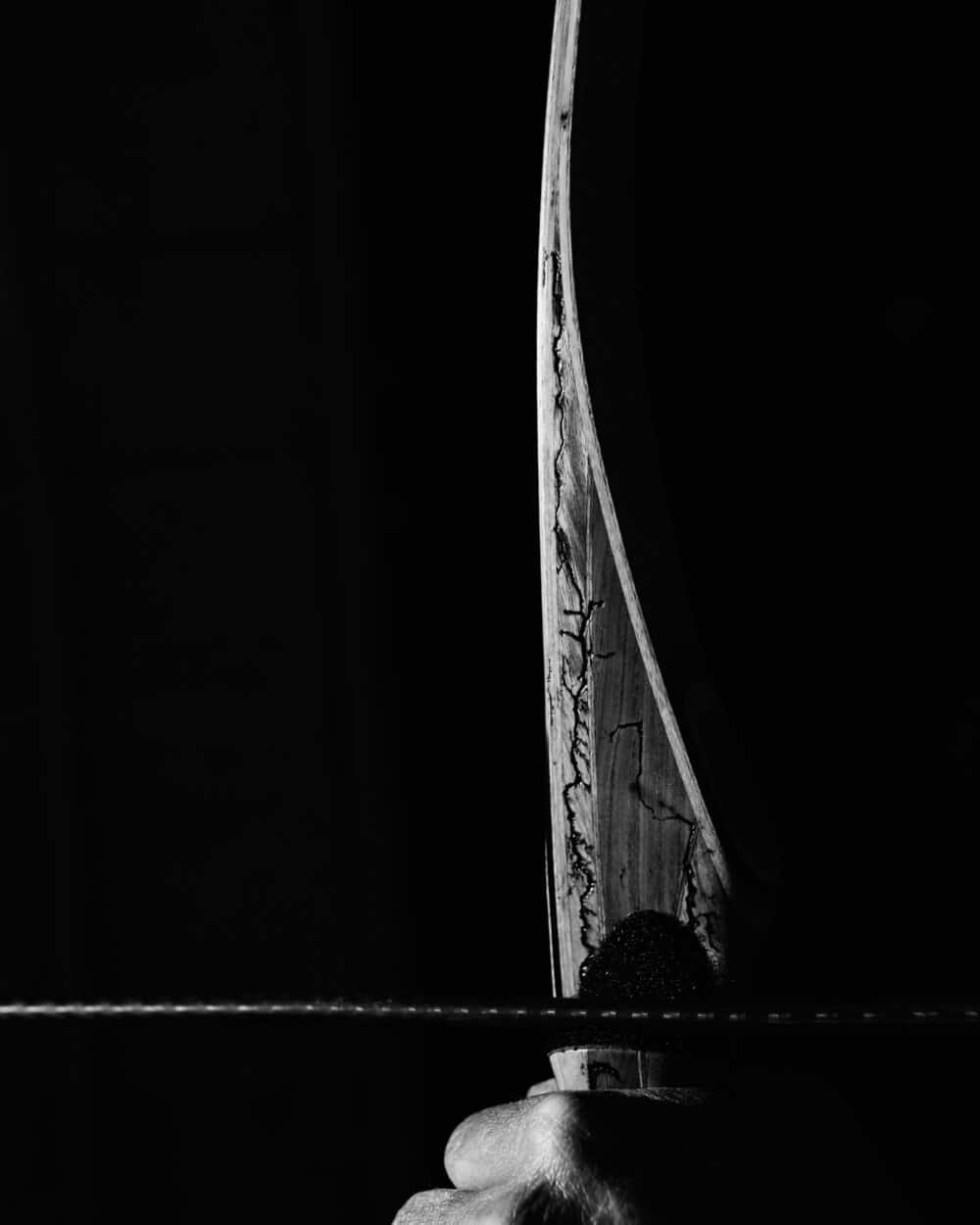
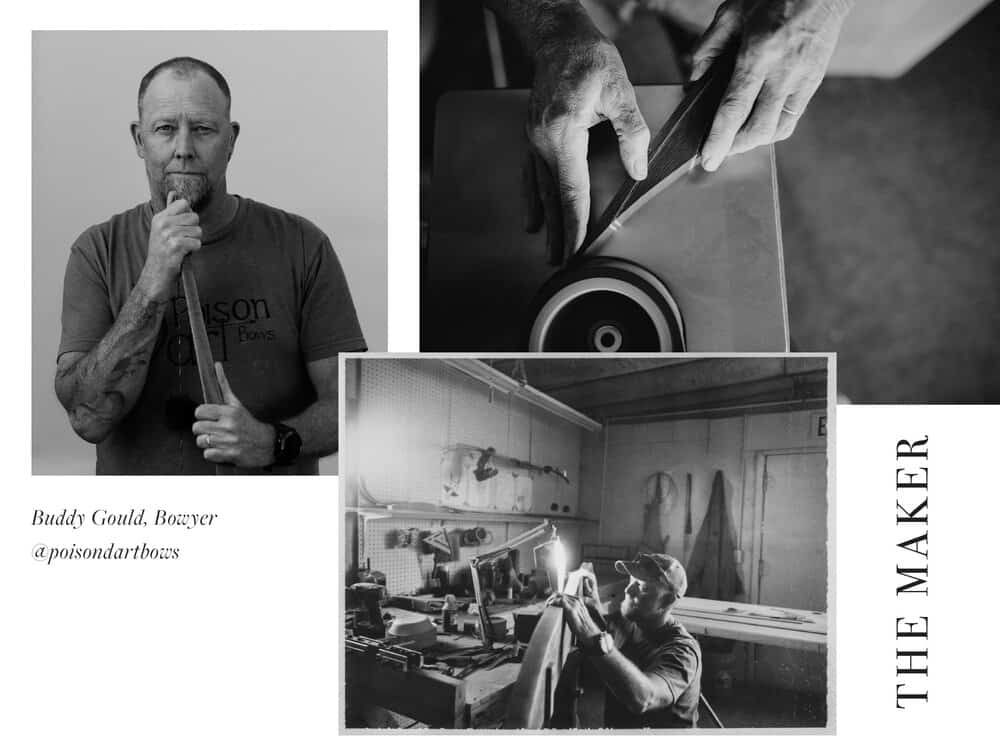
COLORADO | ELIZABETH
The traditional stick bow is a curious object. It is immensely powerful — as a weapon, it can kill, and as an artistic tool it can expose the strengths and failings of the artist. But all of that power lies outside the bow itself. One of the oldest, simplest technologies opens up a world for the projection of skill and the shooter’s development. As the maker, the master and the archer of one bow tell us, the object is transportative in itself. More than anything, the bow serves these three men as a vehicle into frontiers of their own lives. Buddy Gould has been forming and crafting bows for the past eight years. He describes this as his “dream job,” the consummation of decades of archery practice and woodworking craftsmanship combined. On his life’s rough road, Buddy has always found increasing solace and purpose in his art form. Its connection to the hunt, to moments of intensity and wild contact beyond the bowyer’s shop, makes his craft all the more important.
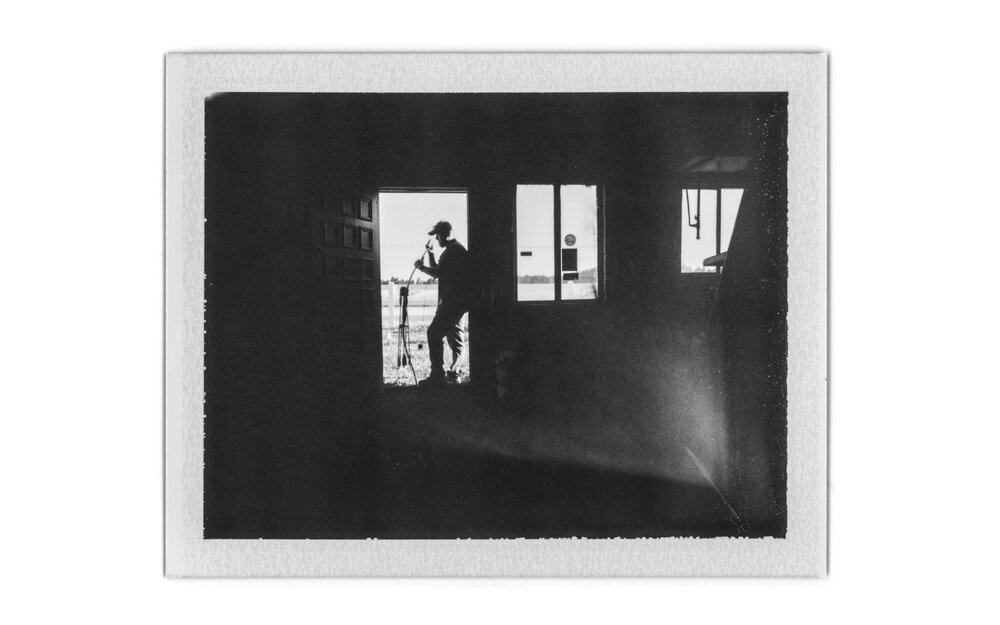
Now, as the proprietor and maker of Poison Dart Bows, as well as the inheritor of Rampart Bows (from a deceased bowyer), Buddy feels like he’s arrived at his finest place and practice. As his friend Tom Clum, Sr. says, “Buddy’s got the brain power to have done anything he wanted to in life, and he took this great brain of his and this dynamite craftsmanship to the art of bow making, where he could be creative. He came up with a design of his own that turned out to be one of the finest shooting longbows in the country.”The longbow he crafted for hunter Ryan Holm, a student of Tom’s, was taken to the mountains in Montana by these three men last elk season. It lay at the core of their continued cultivation of archery as a path — one of oldest practices known to hunters.
“Building bows and traditional archery gives me a real sense of connection with the natural world. I utilize wood that came from trees that lived they lives in the forests where people carrying traditional bows made from similar wood hunted. These are the trees that their quarry may have lived in or sought shelter under. And now these woods are living again in the bows I build, as tools carried by hunters seeking wild game. ”
— BUDDY GOULD, BOWYER | @POISONDARTBOWS
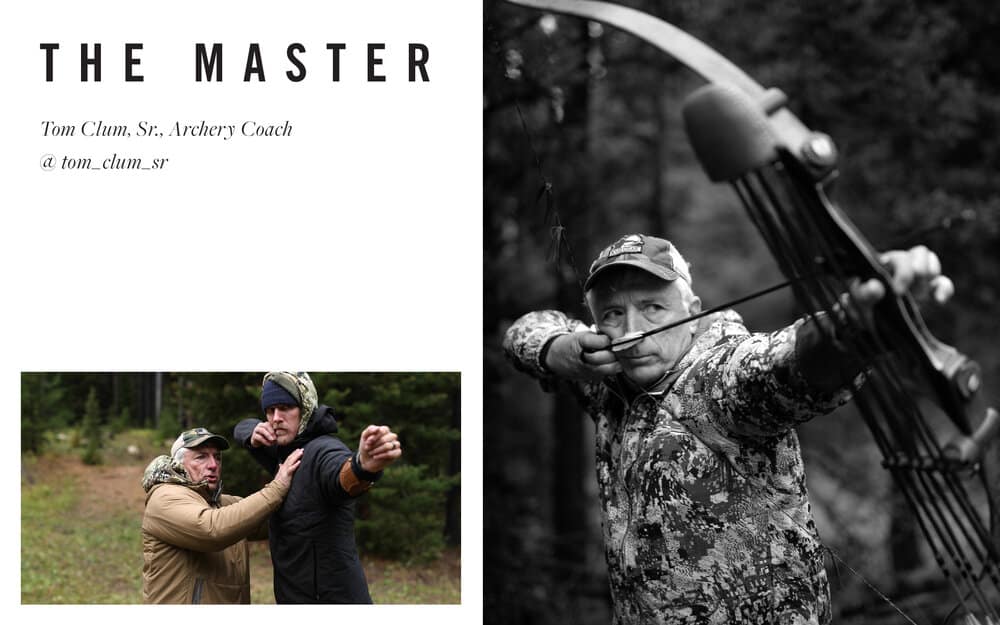
COLORADO | WHEAT RIDGE
At some point in the 1980s, Tom Clum, Sr. decided he wanted to up his traditional bowhunting game. There was technical instruction available in the books and DVDs published by all manner of “expert” bowhunters. There were classes all over the country for the non-hunting archer, the target shooter. There was nothing in between — no synthesized method for the bowhunter to learn from, and in his search for mentorship, Tom slowly realized the path that lay before him.
He followed the routes of Olympic archery coaches, gradually gaining his own certifications — and confidence — as a coach. In classrooms and on target ranges, he studied the physical intricacies of the perfect bow shot, all the while wondering how to take the form and position into the field. How do you let an arrow fly as cleanly as it might in the mind’s eye out in the bush? How do you locate grace and precision just footsteps from a watching, breathing elk?
As he found his answers to the questions, he always wondered: how can this be shared? Coaching became Tom’s lifestyle. He found that he never tired of paying attention to the details in every student’s every shot. In coaching them, he deepened his practice through expression and developed both scientific and interpersonal understandings of the form. As his pupils attest, he is a consummate master of the most important instant of the bowhunt — the shot — and the world of variables that affect it.
Tom’s passion lies in a single, endlessly pursued moment: the release. In the second that the arrow takes flight, the emotions, discomforts, capabilities and hopes of the archer have been exposed. This moment can be made again, endlessly, without ever losing any of its beauty. Tom, through himself and his students, will always be perfecting it.
“The emotional state, mental state, and the personality type – all goes into it. Truly, that bow is a part of you, an extension of you. And that’s the hard part, too. You’re connecting to the target through your eyes, your body and your hands.”
— TOM CLUM, SR., ARCHERY COACH | @ TOM_CLUM_SR
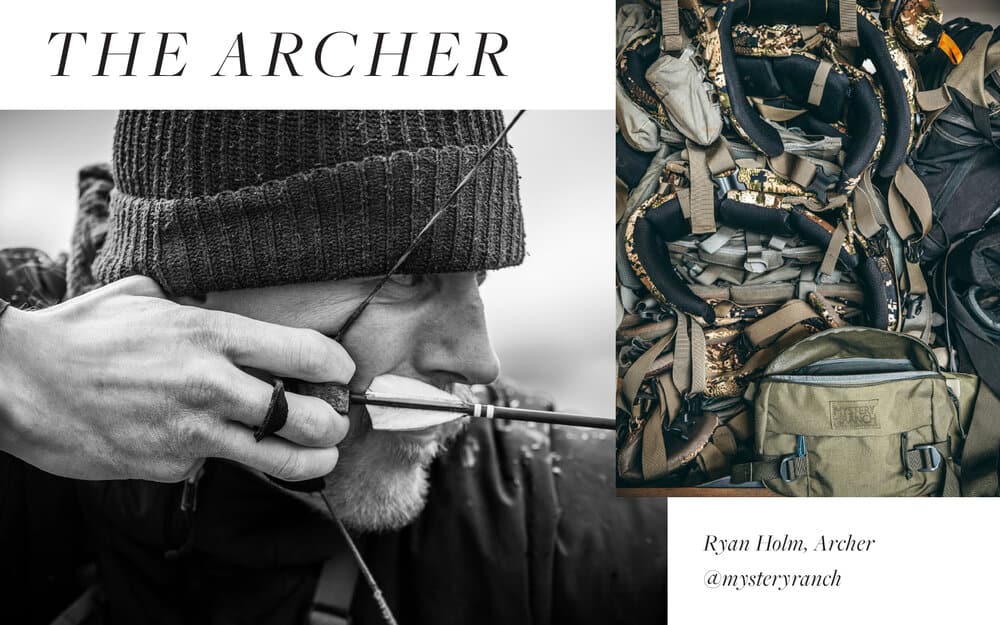
THE ARCHER
MONTANA | BOZEMAN
Buddy Gould built the bow, and Tom Clum, Sr. was the coach. In the archer, they had a kindred spirit. Ryan Holm was just as enthralled by the revelations of the shot release. A lifelong athlete — climber, baseball pitcher, hunter — and Marketing Director of Mystery Ranch, Ryan found many of his fascinations synthesized in archery. As the culmination of a long and dedicated preparatory period, Ryan pursued his first traditional bow hunt for an elk.
THE MEETING
The traditional bow is a prophetic weapon — unveiling imbalances in the body and spirit that I didn’t know existed. The innate, natural malleability of my first wooden bow challenged me to let go of control, let the desire for measurable perfection slip away from my thought flow, and in so many ways released me. I had to give myself permission to move through the process into a higher self. The physical structure I’ve built over the years has many flaws — changing my practice to traditional archery allowed me to test sinews in another direction. The bowyer fabricates the bow, and the bow shapes the archer. The bow is an affecting tool — it etches its mark on all who use it. Buddy Gould understands this. In our first conversation, asking him to make me one of his bows, he was able to see me for who I was — and wasn’t. Buddy asked about and intuited my weaknesses and sanded an image of me through the wood. My first time holding the bow he made felt different from others — like I was looking in a mirror, but not recognizing myself. The bow was poking at my ego, making me doubt that I could shoot it accurately. I wondered, then took up its challenge. It was a pleasure to befriend Buddy. To begin to hunt with him, a true privilege. I was introduced to Buddy by Tom Clum, Sr., a man completely rooted in the traditional archery brotherhood, living in a bow shop, devoted to the discipline. On Tom’s life’s path, he’s traveled country miles, facing failures and gathering endless lessons. Now in his old age, he exemplifies the truth that if you make enough mistakes, you eventually start getting things right. Tom sharesthis process, though, breaking people down to build them back up, teaching with the heart, and embodying the knowledge of his community with every gesture or word of advice. The master understands the draw force line — everything aligned — with every part of his being, sharpening those around him with every release he guides. Tom took it upon himself to positively form me into a lethal archer.
We all have steps in our lives as hunters, and I already had met the standard requirements of hunter’s safety, learning a few tips from friends, and sighting in my rifle at 200 yards. I was drawn to bowhunting by a simple suggestion. An old friend of mine who knows me well said, “Since you love the process, an arrow flying at an elk from a bow will enthrall you beyond imagination.” I’ve never been one to take the beaten path, and this had an allure, so I moved in the opposite direction of technological innovation and the distinct advantage of a rifle. I picked up the stick bow, not my first bow, but a more arduous step outside the modern process. I was seeking an endless challenge, for myself, away from complacency. I saw the value in a practice that would always evolve.
It wasn’t until this way chose me that I fully understood why: to layer another current of instinct into my character. From the start, archery revealed substantial weaknesses in many areas of my life. Prepared or not, I would see who I’d come out as on the other side.
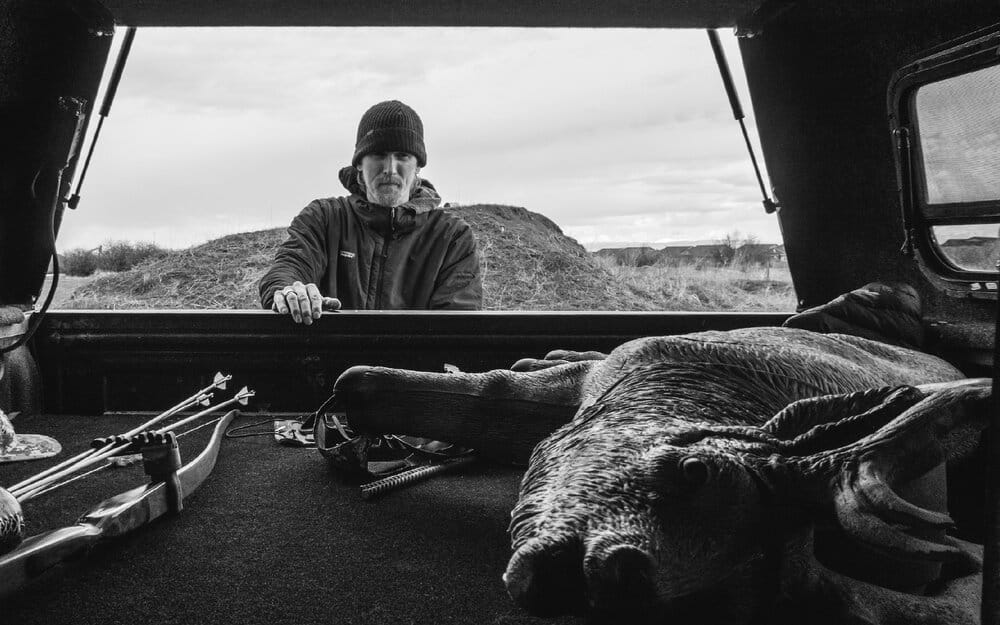
THE MIND
Discussing the weapon with Buddy was the surface. We did not meet in person, but over the phone he immediately felt close. He had a shrewd laugh and I felt like I could hear his smile. I asked him for “a simple design, only wood, nothing fancy.” He said: “A longbow.” My mind sank into the next layer, the physical training. Physicality plays into the practice of archery because you are learning how to activate specific muscle fibers in different holding positions — beginning, middle, break — for an undefined amount of time. Muscle memory is an excellent teacher, letting your body adopt the positions as second nature and building you into an archer in all the slow moments before the release of the arrow. Over ten months of concerted training, I was able to gain exactly the muscular strength required for the backcountry.
It was from this point of preparedness that Tom’s coaching began to break me down. When we met, it took him a few minutes to criticize my shooting sequence, revealing me to be an amateur.
“Pure talent,” Tom says. “I’ve watched a lot of pitchers throw a lot of different ways. Unconventional throwers and quarterbacks can get away with rare form. A lot of the way you shoot is kind of like that, honestly.”
“The “pure talent” statement hit me in the heart like a dagger. It was true. Most everyone would take this as a compliment — ego inflation — but a talent only gets you so far. Consistent practice is what embeds your talents into your ability, and I had so much practicing to do.”
— RYAN HOLM, ARCHER | @MYSTERYRANCH
“Also, you don’t have giant mobility. You haven’t been using your back for much, for archery or anything else,” Tom added.
In the development of any skill, balancing each separate block for improvement is essential. I met with my physical therapist to understand how to enhance my back strength. But drilling into my bow technique, the central ingredient to advance, was the hardest, steepest challenge of all.
The process became meditative, revising through experience: Hook the string using three flexed fingers while drawing together the pinky and thumb, aligning the elbow with the force line of the arrow, creating an outwardly bent wrist. Relax your bow grip with your left hand with two fingers resting. The bow arm is straight, fully engaged by twisting the forearm inward (maintain this position without collapse). The pre-draw has the arrow tip pointing down and away from the target. Engage your lat muscle as you start the process with the draw arm and keep the scapula engaged. Rotate the shoulders to align with the force line, hollow your fingertips, and center your mid-section by engaging abductors. As you begin to draw, raise your bow above shoulder height, allowing you to sink your shoulder into the socket while fully engaging the scapula, down and back — draw to load. Up with the elbow to set the anchor. Focus on the aim, then soften the view of the target, watch it, see the path, then “catch the ball” behind your back while you subconsciously release.
We rehearsed body positioning, mimicking with a rubber band and string, in theoretical conversations all the while over the outdoor flame while it rained. Finally, anxiously, I started flinging arrows…”That arrow is like a laser beam. It’s flying really, really good,” said Tom.
Eventually I reached a point where my preparation was done, leaving everything ahead to the subconscious. My practice moved into instinctive second nature. I visualized the hunt, appreciating the fragments of my learned efforts, and got ready to go into the field. I laid my gear out in the garage, checking that it was all operational, charged, fixable, backed-up, waterproof, sharp, warm, bright, safe, connected, searchable, and nearby.
The pure mysteries, the unknown unknowns, are the ones that stretch me, expose vulnerability, and strike a charge in my soul to venture me back to having a beginner’s mindset. I’ve mourned the deaths of friends that were surrounded by an echo chamber of their own talents while rock climbing, the mountains reminding them of their fleeting time. These deaths are deeply wounding and remind me to pursue each challenge with eyes wide open. The hunt, the animals, don’t care about your relative talent or accolades, so I believe in a constant return to the beginner state — approaching with humility.
Traditions don’t all start the same way, nor should they, and who can really connect to the certainties of the old guard and all the books your friends suggest, all the homage you’re supposed to pay? The Buddha’s quoted as saying: “Doubt everything. Find your own light.” I began my journey with my own kind of researching — asking questions, testing my hypotheses, failing, and trying again. The Law of Attraction, that the things you need to teach you will find you on your path, is one of the concepts that has engulfed my consciousness for many years and continues to bring positive direction in my life. It’s shaped my thoughtflow with flashes of visions. I have long believed in these powers that aren’t wholly understood in science today. I trust these forces in channeling my emotions to manifest what I want to experience.
The body cannot go where the mind hasn’t gone before. In rock climbing, I’ve needed a practice of visualization to be able to find focus in whatever high-risk situation may come. There is a mind shift when you are in the crux of a climbing move; feelings resonate at a deep, internal level that failure at this juncture is not an option. There, you can feel every part of your body, down to the slightest foothold. You are here and nowhere else, so practicing this mental state before attempting it physically can save your life. I found myself in the same flow state at full draw with the bow, ready to execute the release with an animal in my line of sight. Both are high-stress situations, and being cognizant of your emotions will allow you to decondition an unwanted response.
I visually rehearsed the scenario over and over before my hunt. The white-bodied bull elk is in his domain, the wind in my face, and we are alone together in the dirt. We’re meeting on the mountainside, while he bellows the songs of his ancestors, shaking the cords in his throat, getting ready to dance with any fierce adversary. The playing field is fair and the stakes are high — I move in with quiet footsteps. Meditative practice allows me to come back to my breath, be present, feel my heart, my lungs, my legs, my bow, and the sticks poking into my wool socks. I’ve been here before and he has too, since time immemorial.
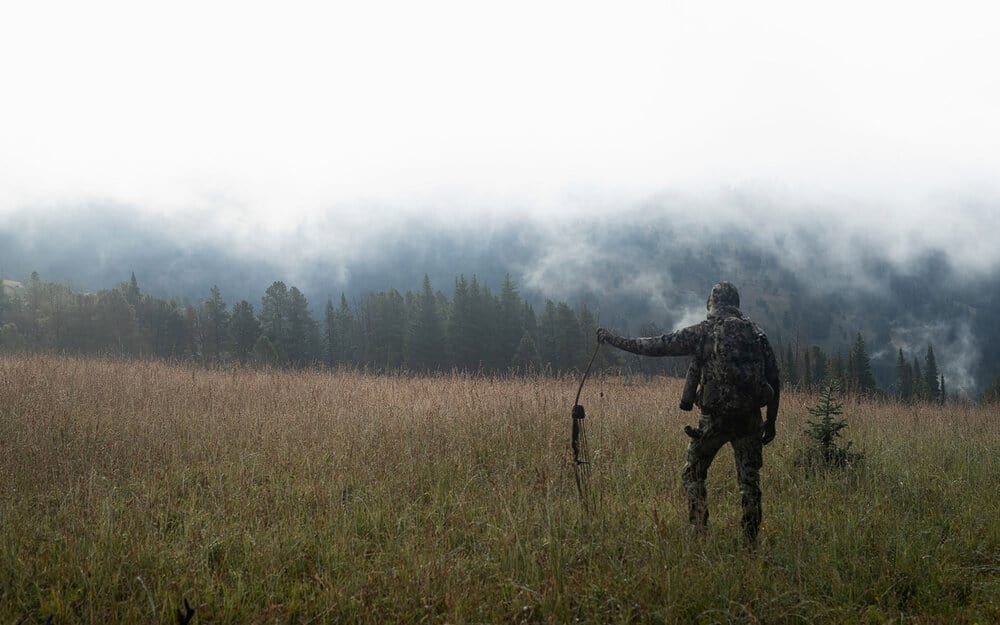
THE HUNT
I’ve always gone into pursuits of the heart to feel alive. It’s the only place where I know where I truly belong. It can be an uncertain place, full of rage, but I cannot deny how it makes for an adventure into the mystery. Weaving through deep, dark forests, in mind and body, I can feel the definitions of my soul. There I confront my fears, strip ambitions to dust, and seek the worthy adversary who knows these timbers. The mountains have their secrets — elk have their ancestral routes, waterholes, safety spots, threats and exit strategies, all beyond my imagination.
The rain fell heavily on day one of the hunt. Time was still, the day long, and kinship was formed over arrows hitting a target as Tom coached me. We kept to the crackling fire, shelter, coffee, until it was time for a late afternoon snooze to allow my mind to digest all the details imparted from Tom.
The early fog was thick on the second morning. All was silent, as if the forest slept, soaking the rainfall into its roots. The faint trails made for tricky navigation in the dark, following GPS waypoints to guide us. We found an open meadow at the top and decided to let the Leica glass walk from there. The day was slow, hearing bugles down long canyons, from under a thick forest floor. We had encountered many recently visited bogs with fresh signs on the mountainside benches. The wind was consistent, and the ruggedness abundant. The bulls were clearly not in a rut on this day, but a few weeks back we had seen several bulls with cows in this area. We knew that patience would reveal.
Moving to a new, well-known corridor was our next move. I’ve rarely been attached to one area, as any hunting district holds elk, and each mountain has a slightly different and interesting atmosphere. My friend and videographer Ben Herndon moved out in front of the group, and by evening we left the others at camp to see if we could get a glimpse of what might be out there for the morning. It was a silent night — no elk, and only tired legs at the end of day two.
The early, early mornings are the best time to track down bugling bulls and get a read on where they’ve been at first light. I’ve heard more bugles between three and four in the morning than at any other time during the hunting season. It’s the ritual they use to communicate before pre-dawn, discussing their day, and how they will work together to navigate our pressure. One of my favorite games to play with my father was chess, and that taught me more about patience and strategy than any game in a field. Understand your opponent, calculate their movements, and revisit your plan with every move, considering several sequences in advance.
The third morning arrives with a brisk chill, and our intentions of getting to the top of a mountain, starting at 3 a.m., set the stage for an intense hike. I can hear the elk bugling in the distance from the top, and I note their signaling as a reference as we march across a lower field, thick with sage. We make it through the entangled brush when, out of nowhere, there comes a rumbling sound of heavy struts in my direction. In the pitch black, my instinct kicks into gear — dropping my bow, reaching back for the bear spray and up to my 1911 in my binocular harness. I shout a loud “HEY,” and the animal diverts to my right. Though I never glimpse the animal, I feel blessed that it made the decision to flee rather than fight.
We arrive at a grazing fence, move through it without a squeak, and start side-hilling down into the aspen grove wetlands littered with boulders. A bull sounds a deep bugle from below, maybe a few hundred yards from where we stand. Bingo. Calling back to it, I intertwine bull calls with cow mews. As the bull gets charged up, the rest of the group joins in as they come up behind us. We start the procession of calls directed at this same bull. He comes closer with caution, unaware of how this challenger, the rival bull we imitate, has approached. Unsure of the situation, the bull stops communicating and walks away. We hold for a moment, then continue upward, traversing below the ridgeline with the wind in our faces. We find grassy-timbered, thoroughly rubbed trees — clearly a bachelor pad for bulls. We stop for a water break, remove a layer of clothing, listen, and replenish. The heat arrives with the thermal change of wind direction, allowing for downhill navigation in our circle. We hear the bull bugle, like a chuckling, not far from where we left him. We move down to get a visual and he sounds again — he’s even closer. I unlace my boots, Ben throws them over my pack by their knotted laces, and we stalk our way down the pine needle floor. I whisper to Ben to give me space of about 50 yards. The bull bugles again, lifting up his head, and the sun rays glimmer off his antlers. I shift gears into a fast, quiet jaunt toward the bull. Approaching, I come around a pine tree, and there he is. He stares me down at less than 80 yards.
The place is a small ravine, thick with tree cover, the wind in my face. I step back into cover, and let out the raspiest, angriest bugle in my vocal cords. The bull starts walking right at me, and at a slow, steady pace — time freezes. I can hear his distinct footsteps in stride. Entering a Zen mode where every movement makes sense, I set up my bow the way I’d practiced hundreds of times. The situation couldn’t have been written any better for my first traditional shot at a bull elk — visualizing the moment, as he comes around the tree, placing the Valkyrie Jagger broadhead in the vitals right behind the crease in the front shoulder. I set the hook, secure the handle with the bow hand, set the draw force line, tension in the back, and draw back and down into the scapula. I bring the elbow up, focus aim, soften eyes. I have not forgotten the sound of his steps as he approached. Here we go — Let’em fly.
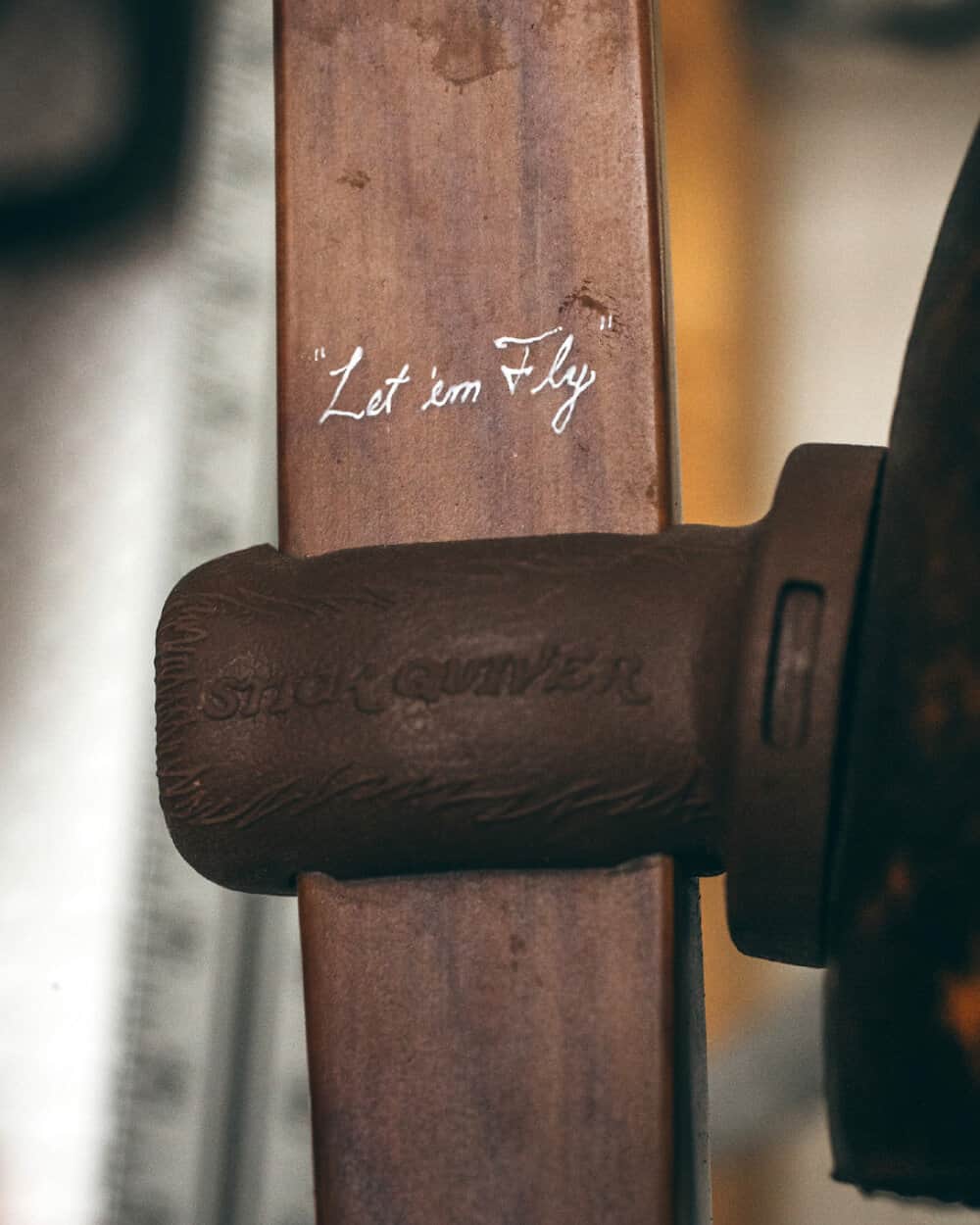
This adventure will be continued in a feature-length film to be released in 2021 by Mystery Ranch.
Related Stories


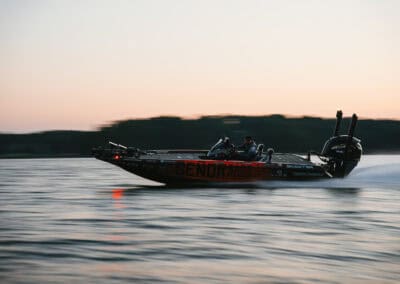
Latest Stories


